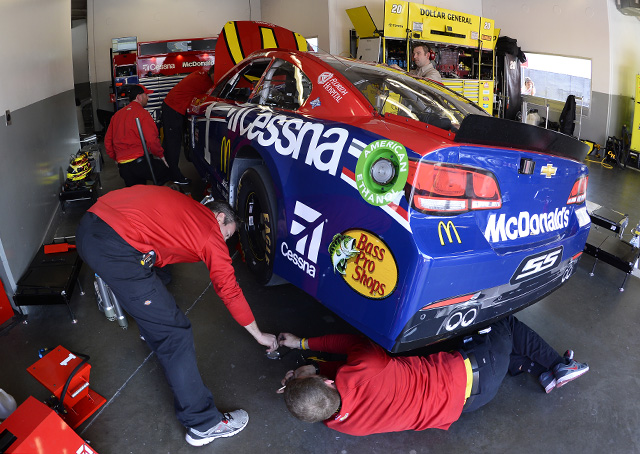
When NASCAR’s Jamie McMurray races across the Daytona International Speedway in a Cessna-flagged Chevy Feb. 21 during the Daytona 500, he will have more in common with pilots than the company logo.
McMurray will be flying his Sprint Cup vehicle around the 2.5-mile high-speed, tri-oval track at nearly 200 mph, far outpacing the speed of Cessna’s traditional training aircraft (even with a hefty tailwind). The Textron company’s logo flanks the curvy left and right rear quarter panels of the blue-and-red No. 1 Chevrolet SS. Cessna has sponsored the car since 2013.
Aviation and auto-racing enthusiasts might be surprised by the similarities they find between the two sports during the race in Daytona Beach, Florida.
- The Daytona International Speedway, also known as the “World Center of Racing,” is located across the street from one of the world’s largest aviation universities. Embry-Riddle Aeronautical University's Daytona Beach campus boasts nearly 400 training flights a day, according to the school.
- From the top row of the new Daytona Rising grandstand, Daytona Beach International Airport’s runways 7/25 and 16/34 are within eyeshot so that spectators can watch aircraft rhythmically land and take off while racers circle the track below.
- Cessna’s trainers—known for their affordability, dependability, and ease of flight—are familiar fixtures to flight school students, instructors, and pilots. Similarly, car manufacturers like Chevrolet have made a name for themselves by offering the masses affordable, dependable automobiles.
- NASCAR drivers race their computer-designed, aerodynamically adjusted vehicles just inches above the pavement at speeds requiring precision handling. Pilots pride themselves on flying their aircraft precisely, particularly during critical phases of flight like takeoffs and landings.
- McMurray will power his fuel-injected V8 engine to 9,000 rpms, but pilots of single-engine Cessnas wouldn’t want to see their tachometer inch past the 2,500-rpm red line.
- NASCAR drivers, including McMurray, are familiarizing themselves with a new-for-2016 digital panel that allows drivers to flip through 16 different screen configurations showing critical engine and suspension parameters. Many general aviation pilots already are using glass cockpits and handheld digital devices to help them navigate and monitor weather, traffic, and critical engine parameters.
- NASCAR drivers can’t rely on fuel gauges—their vehicles don’t have fuel gauges at all (nor a speedometer, but that’s another story). Wind direction, speed, time since last pit stop, and tire wear are key factors for their fuel consumption calculations. Although pilots have fuel gauges in their aircraft, they are taught not to trust them. Instead, aviators calculate fuel burn based on power settings, wind direction and speed, length of flight, and altitude.
- Crew chiefs like McMurray’s Matt McCall are key to driver safety and stand at the ready to disassemble a vehicle’s components for inspection or replacement to ensure safety. Likewise, airframe and powerplant mechanics are important to promoting flight safety.
With so many similarities between NASCAR and aviation, it’s no wonder Cessna continues to promote its brand in the motorsports arena.



